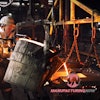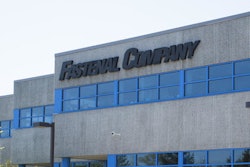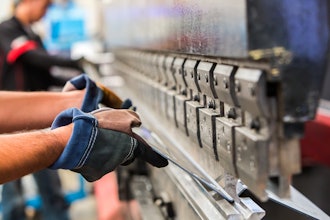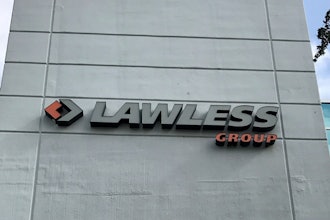B2B E-Commerce gets significant press these days. A Google search of the term finds 25.5 million results in .77 seconds. Online B2B sales are forecast to pass $1 trillion in a few years.
Following the internet traffic, endless articles, and online opines on B2B E-commerce, there must be some general agreement, in a concise statement, as to the selling points. I thought the advantages of the tech to be self-evident until I asked colleagues in the manufacturing, distribution, and software community what exactly they were selling. I got generalized answers such as convenience for the customer, increased sales, easier search capabilities, lower sales costs, etc. but nothing that was satisfying or encompassing. So in this blog entry, I'll try to give a perspective on the technology, why it will succeed, and why it is more transformative than many realize.
Free Whitepaper: The State of B2B E-Commerce
The History and Role of Cost in B2B Markets
B2B supply chains, in the modern-era, got their start around the time of the Civil War. Getting arms, munitions and supplies to the Union troops created a need for the beginnings of a modern supply chain. Manufacturers, distributors, transporters, and sales agents have a significant part of their history in the early 1860's. There was a need to make, store, break-bulk, and represent the items for sale. The extension of credit and its accounting also had advances during the period.
Several years ago, a colleague and I (Stephen Griffith, Phd, Adjunct Faculty, Univ. of Maryland), traced the roots of the beef supply chain starting immediately after the Civil War and ending in 2000. We called the work Cowboy Economics as it started with cattle drives up the Chisholm trail to the rail head in Kansas and ended with modern grain-fed, boxed beef, shipped via refrigerated truck to the local market. During the roughly 140 year period, we traced close to a dozen technology improvements that reduced the time to market, improved quality of the merchandise, and reduced material loss.
Among the beef supply chain improvements were barbed wire that stopped "free-grazers" and created ranches. The big Texas ranches originally drove the cattle to market in Kansas. But by the 1880's, the cattle drives were to the Dallas rail-head which carried them to the slaughter yards in Omaha and Chicago. The railroad killed off the Cowboy just as barbed-wire knocked off the "free-grazer" two decades earlier. The gigantic Texas ranches were, several decades later, knocked off by automated silage and grain-fed beef out of the Corn Belt. And, a few decades after that, refrigerated warehouses and refrigerated trucking put the huge stockyards in Omaha and Chicago out of business. The beef was rendered, stored, boxed, and shipped close to grain feeding facilities.
Many other improvements in communication, transportation, storage, distribution, packaging, and food science improved the speed to market, reduced forecasting time frames, and took cost out of the supply chain. Between 1900 and 1990, the cost of a good steak decreased from a day's labor to less than an hour. Technological improvements took cost out of the merchandise and drastically expanded demand with lower costs. The study was a prime example of productivity improvement of the supply chain over time and a testament to the value added by technology.
The Durable Goods B2B Supply Chain and E-Commerce
We spend most of our time in the Durable Goods space of the North American economy. It is a roughly 2.8 Trillion dollar entity of the continent's GDP. Today, thousands of manufacturers and tens of thousands of distribution companies serve the space. Our estimate is that E-Commerce will change this significantly. The changes are a bit tricky to predict as we are still relatively early in the game. B2B e-commerce, for all intents and purposes, is a 15 year-old technology. Peter Drucker used to say that it takes a good 30 years for an emerging technology to come into its own. However, it is not too early to take lessons from the B2C sector and efforts afoot to predict what some of the big changes will be including:
- Outside sales forces will decrease. This will be especially true for geographic sellers who are, more than less, undifferentiated. Much of durable goods are commodities and outside sellers add scant value here. Customers simply won't pay for an undifferentiated sales presence.
- Branch locations, a big part of the local distribution base, will decrease. Advances in logistics, warehousing, and information tracking will decrease many of the inventory holding brick and mortar locations.
- Customer service reps, who relay basic information on inventory availability and order status will decrease. You can get this information online.
- Undifferentiated buyer roles will decrease. Ordering is asynchronous with the technology and buyers can, with accurate sites, order any-time, from anywhere, and check price and availability far more quickly than with any preceding technology.
There will likely be a net decrease in the outside sales, branch, customer-service and buying positions that supported the old-style supply chain. One can lament the loss of jobs here just as one can lament the loss of the Cowboy to the railroad in the 1880's. But the Cowboys and their progeny found better jobs, just as former sellers and branch employees will. New jobs are being created in software, integration with existing system(s), and maintaining the I/T necessary to give a reliable e-commerce experience to the customer. New roles of the outside seller are coming to fruition including consultative, application expert, and enterprise functions. Product management positions are expanding. They manage taxonomy and content; the heart of B2B e-commerce. We find, especially with distributors, a move further into the supply chain with field service and consultative advice on dock to production line processes. Many of these jobs did not exist a decade ago. They exist today and are growing because of the digitization of the supply chain.
What are we selling when we talk E-Commerce?
The advent of B2B e-commerce will, in the long run, take cost out of the supply chain, improve quality, decrease lead times, and improve productivity of buyer and seller; from the front end to back end of the chain. In essence, B2B e-commerce is a venture in productivity improvement and getting cost out and this is what one sells with the technology.
Our angst is that there are many members of the durable goods supply chain that regard e-commerce as tactical in scope. It is simply another way to transact an order. We find companies who tweak out their e-commerce with the best technology and simply lump it on top of an undifferentiated sales effort, full brick and mortar platform. They add additional expense to an old-style supply chain, don't reduce costs, and often can't give the customer a better deal. They don't know or either underestimate what they are selling. If history is a guide, they will lose sales as their infrastructure and service costs are too costly.
Time is running out
Our research finds that two-thirds of the distribution base and a bit over half of durable goods manufacturers aren't up to modern day standards in e-commerce technology. Currently, the MRO sector has approximately 20-25 percent or so of goods purchased online. Compounded growth is forecast at 7 to 10 percent through 2020.
The MRO e-commerce space is dominated by a handful of companies and outside entrants including Amazon Business and Home Depot. Many privately held distributors and manufacturers that market through them are increasingly marginalized as they cling to old-style supply chains. As the MRO sector is an amalgamation of many different product/vertical markets, it serves as a bellwether for the larger durable goods supply chain. The portent, for many existing players is not good and time is running out.
Our hope is that the lessons from the beef supply chain and Cowboy economics are considered. B2B e-commerce is a strategic change and disruptive to those who don't invest in the technology. And investment in technology reduces cost, improves productivity, and gives the customer a better deal; it is a great sales story.
Scott Benfield is a consultant for B2B supply chains in the areas of digital marketing, sales, and general management. He is the author of six books on the durable goods supply chain. He can be reached at [email protected] or (630) 428-9311.






















